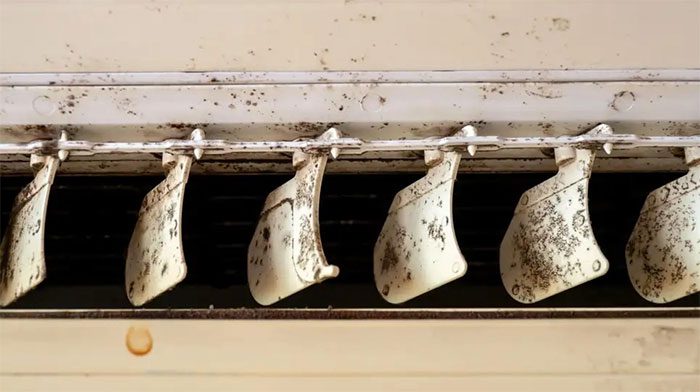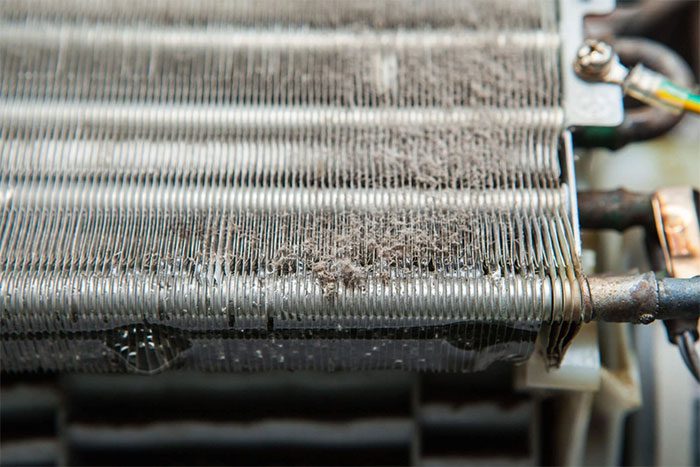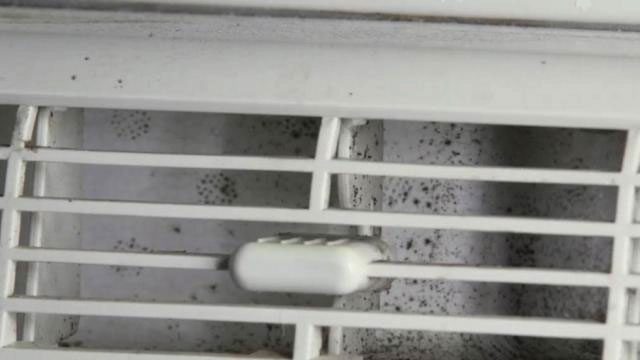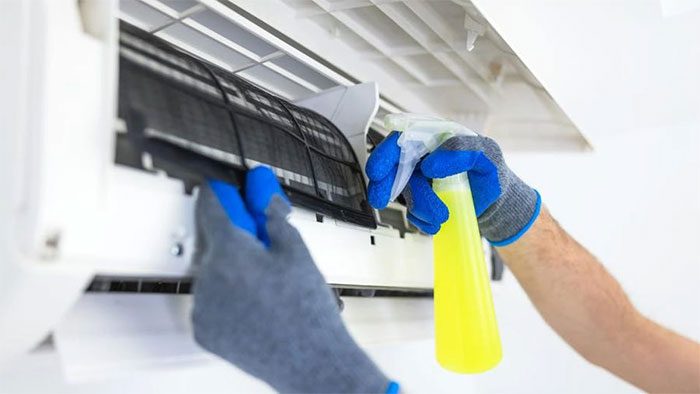If you notice a musty smell coming from your air conditioner, it’s a sign of a serious problem.
Air conditioning units make our lives much more comfortable, especially during hot weather. However, if your unit is not well-maintained or has not been used for an extended period, it can become an ideal environment for mold to thrive.
Since mold can cause or exacerbate various health issues, we certainly don’t want to see it anywhere in our homes, especially inside an appliance that circulates air. Below are ways to determine whether your air conditioner has mold, and if it does, what steps to take to address the problem.
Signs Your Air Conditioner Has Mold

Severe mold signs on the air conditioning unit.
Unless mold is visibly present on the outside of the unit (as shown in the image above), users may not easily detect its presence. Typically, the first thing people notice is that the musty smell only appears when the air conditioner is turned on.
Another potential sign is if someone in your household has new respiratory symptoms or if existing symptoms worsen—such as coughing, wheezing, or shortness of breath—or experiences more frequent headaches or sore throats. While this is not a definitive sign, mold is one of several potential causes that can trigger or worsen respiratory symptoms.
How to Check for Mold in Your Air Conditioner

Careful inspection to avoid confusing mold with dirt.
Always remember that before conducting any inspection that may involve mold, you should wear a mask to avoid inhaling mold spores or dust.
Mold can appear in various colors, including black, brown, green, white, pink, yellow, or orange. It can also manifest as black dust accumulating around the air conditioner’s vents. Therefore, inspect carefully to avoid confusing it with the usual dirt found on household appliances.
Even if mold is not visible from the outside of the unit, it may be growing inside. Here are some inspection points for different types of air conditioners:

Shining a light is a simple way to find mold.
For wall-mounted, window, or portable units: Unplug the unit, then remove the front or back cover to access the filter. Take out the filter and look for stains, especially brown, black, and greenish spots, or anything resembling white or gray powder. If you can’t see any, use a flashlight to check inside for signs of mold.
For central air conditioning systems: Do not attempt to disassemble any parts. Instead, shine a flashlight inside the unit and look closely. Check for any signs of mold above the fan, ductwork, and vents. Also, remember to inspect the entire outdoor condenser unit if possible.
What to Do If You Find Mold in Your Air Conditioner
The first thing to do if you discover (or suspect) mold in your air conditioner is to stop using it. This means turning off the unit or, if it’s a central air system, ceasing its operation. Continuing to use a contaminated unit can spread mold throughout your home.

You can replace the filter or clean it yourself.
If your window, wall-mounted, or portable air conditioning unit has a significant amount of mold, deeply embedded within the unit and its electronic components, unfortunately, you may need to replace it entirely. The chance of completely eliminating mold from every nook and cranny is low, and the cost, if any, will not be small. However, if the mold is limited to the filter, you can replace it or attempt to clean it yourself.
First, wear a mask, gloves, and protective eyewear. Then gently and carefully remove the filter. Next, use a soft-bristled brush (dispose of it after use) to remove any visible debris and mold from the filter.
Next, mix one part detergent (dish soap, etc.) with ten parts water in a basin, then fully submerge the filter in the solution and soak for at least 10 minutes. Afterward, rinse the filter with clean water and let it air dry. Remember to clean both the inside and outside surfaces of the unit, then reinsert the filter in its original position and run the air conditioner for a test.
After running the unit for about 15 to 30 minutes, if the musty smell persists, call in technical experts for assistance.
If you find mold on your home’s central air conditioning system, it’s time to call in the professionals. This is not something you can handle on your own.


















































